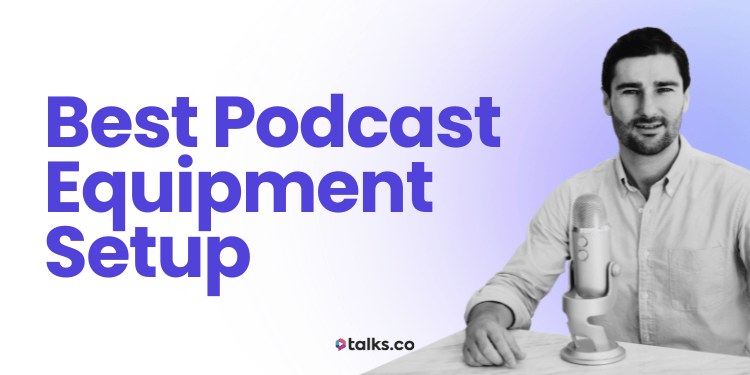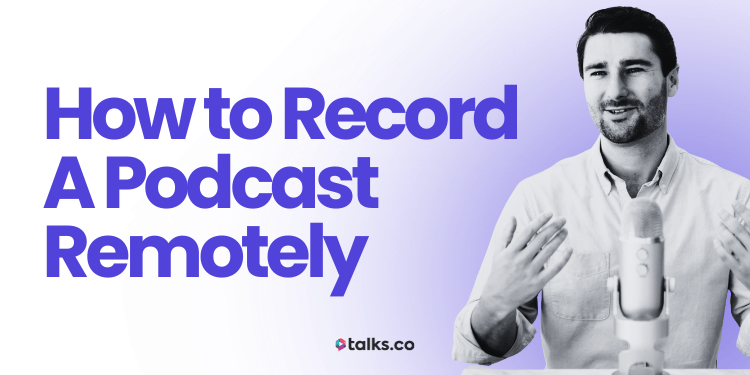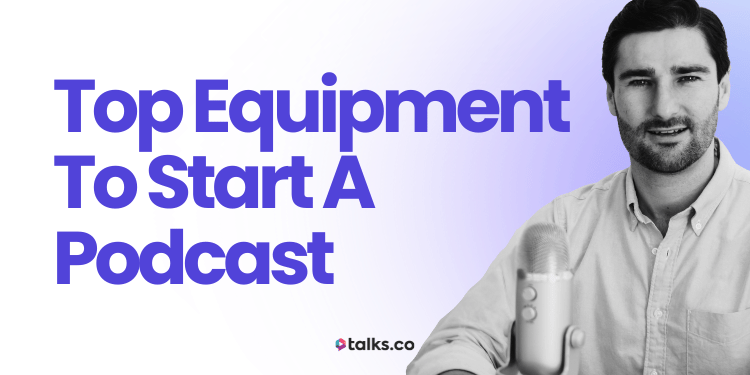If you’re a coach, consultant, or speaker, you’ve probably thought about starting a podcast to grow your audience. But when it comes to podcast equipment setup, it can be hard to know where to begin.
The good news is you don’t need to be a tech expert to create a great podcast.
This podcast equipment guide will walk you through everything you need, from your first podcast setup to professional gear upgrades.
Whether you’re launching your show, recording podcast interviews, or improving audio quality, this guide helps you choose, organize, and prepare the right podcasting equipment for your goals.
Let’s make your podcast setup smooth, simple, and ready for podcast recording day.
What Equipment Do I Need for a Podcast?
Before you record a podcast, you’ll need some essentials. But your podcasting setup will depend on your experience, budget, and recording style.
Start by getting clear on your goals and stick to them: Capture clear sound, minimize background noise, and create a setup that fits your workflow.
Your choice in gear should be grounded in these.
List of equipment needed to start a podcast
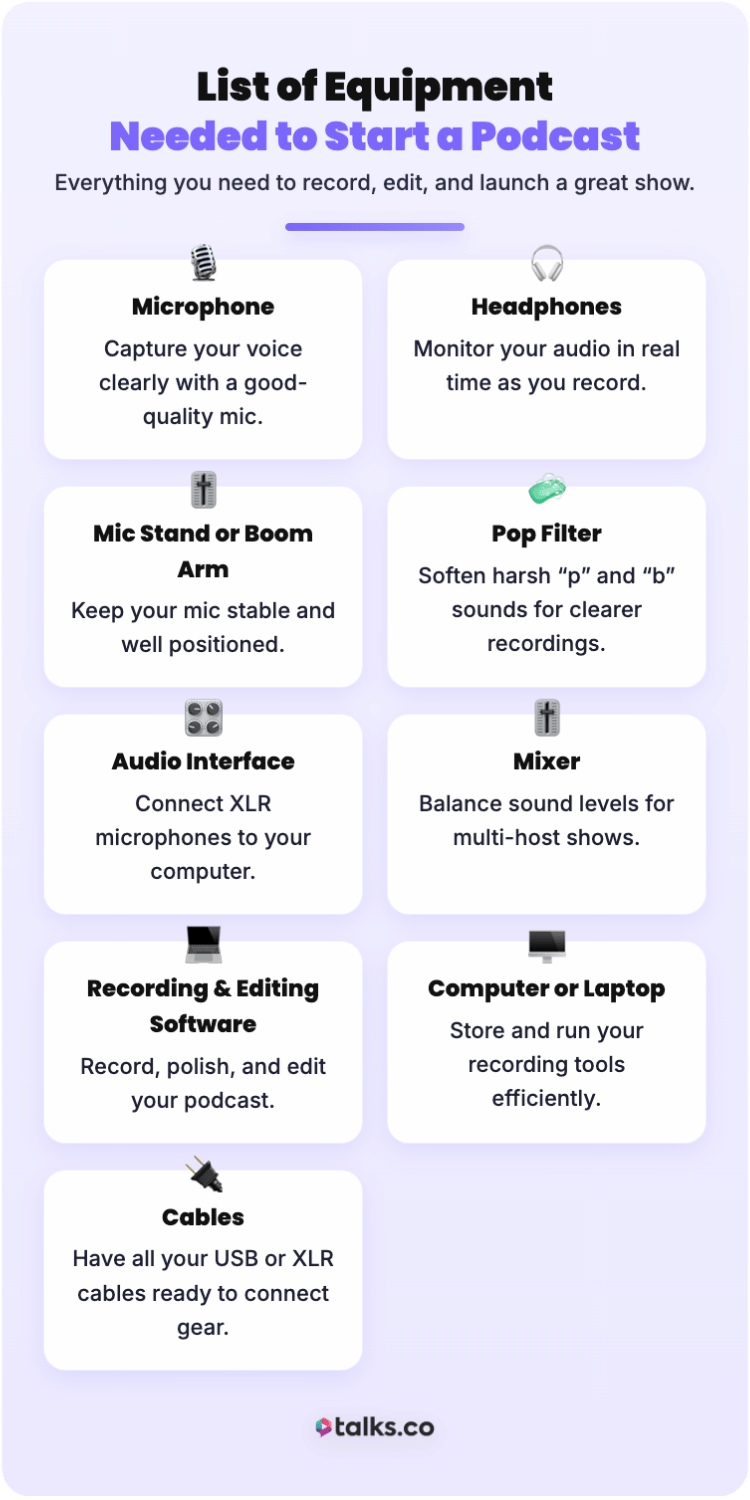
Each piece of equipment plays a role in making your podcast episode sound professional. Here’s a quick rundown of the essential podcast gear to start a podcast:
- Microphone: You need a microphone to capture your voice clearly and record any audio you need.
- Headphones: Use these to playback the sounds you recorded in real-time.
- Mic stand or boom arm: This supports your mic so it’s in a good position as you record.
- Pop filter: Place this in front of your mic to remove harsh “p” and “b” sounds for clearer audio.
- Audio interface: Use this to connect XLR mics to your computer.
- Mixer: This is additional equipment for multi-host shows, so you can balance sound levels.
- Podcast recording and editing software: Install these tools for audio recording and polishing. If you’re capturing video too, look for software that can handle both audio and video.
- Computer or laptop: Buy a good device that houses your software and stores recordings.
- Cables: Make sure you have all the XLR or USB cables to connect your equipment.
Equipment needed for podcast

Having the best microphone and headphones for your setup sets the tone for your whole show. Here’s a comparison of the different types to help you decide:
Microphones:
- USB microphones: This is perfect for beginners on a budget or those looking for a quick setup. You can use USB mics to record directly without additional tech (e.g., Blue Yeti and Samson Q2U).
- XLR microphones: They offer superior sound and more control but require an audio interface or mixer. Great for professional podcast setups or when upgrading (e.g., Shure SM7B and RODE PodMic).
- Condenser microphones: These are sensitive mics with bright and clear sound. Best used in controlled environments with low background noise (e.g., Audio-Technica AT2020).
- Dynamic microphones: They can handle loud sounds well and implement noise reduction. You can use them in less quiet rooms and still have good quality recordings (e.g., Shure SM78 and Samson Q2U).
Headphones:
- Closed-back headphones: These headphones provide isolation from outside noise, so you can accurately monitor while recording. Great for minimizing sound bleed (e.g., Sony MDR-7506).
- Open-back headphones: They offer more natural sound but let in some ambient noise. Consider them for editing rather than recording (e.g., Audio-Technica ATH-R70x).
Podcast equipment for beginners

If podcasting is just a passion project, you can start with a podcast starter kit so you don’t invest too much. Here is the equipment you need for a basic setup for beginners:
- Microphones: It’s better to start with an affordable USB mic you can plug into your laptop, like Samson Q2U or Blue Yeti. But if you don’t want to spend anything, try your built-in recorder in your phone.
- Headphones: Consider basic closed-back headphones like the Audio-Technica ATH-M20x or a pair of earbuds you already own.
- Mic stand or boom arm: Choose a mic stand if you just need something on your desk. But if you’re taking videos too and you don’t want people to see your setup on cam, an adjustable boom arm works better.
- Software: Go for free options like Audacity or GarageBand. They already have both basic and some advanced features you need for recording and editing.
- DIY acoustic treatment: Take out your blankets and soft furnishings to treat the sound of your podcast studio.
If you’re just starting, no need to have a professional studio right away. Just get good audio and video equipment, something affordable, then upgrade later.
You can check out cheap podcast setups for budget-friendly ideas.
Podcast equipment for two hosts
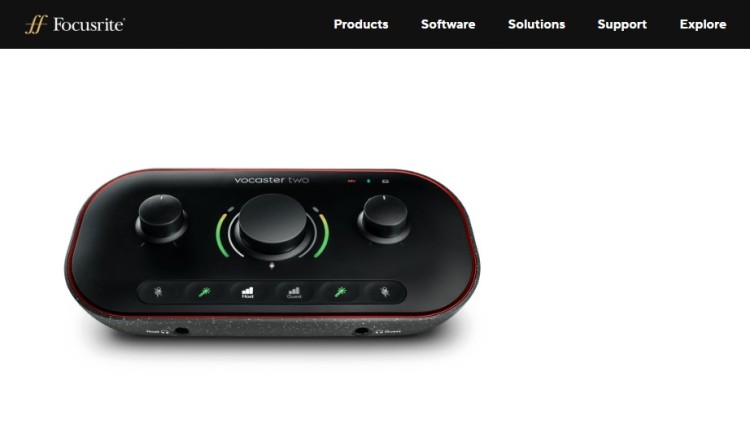
When two people host a show, you need equipment that handles multiple audio sources without mixing things up.
Here are the essentials for two hosts:
- Two XLR mics: Each host should have their own dedicated microphone to make sure your voices are captured at the best possible quality. This way, your voices don’t blend together, and it doesn’t pick up on background noise and room echo (e.g., RODE PodMic or Shure MV7).
- Dual mic stands or boom arms: This helps you keep the sound quality consistent and reduce table noise or bumping when you move around.
- Mixer or audio interface with multiple inputs: This makes it possible for you to record on separate tracks and adjust audio levels per person. Sometimes, this also has built-in sound effects or EQ settings (e.g., Focusrite Vocaster Two).
- Two headphones: With separate headphones, you can hear yourself and your co-host, catch audio issues as they happen, and avoid feedback or lag.
- Multitrack recording software: This allows each mic to be recorded onto its own channel. This means you can adjust the volume, EQ, and edit mistakes for each host independently, rather than being stuck with both voices on one track (e.g., Audacity, GarageBand, Reaper, or Adobe Audition).
If you plan to invite more guests or another duo, upgrade this to a four-person podcast setup.
What Equipment Do I Need for a Video Podcast?
If your goal is to record your show in video as well as audio, your gear needs to expand beyond mics and headphones. A video podcast adds a visual element that can help attract viewers on YouTube or social media.
You don’t need a full production upgrade, but lighting and video quality matter here.
What equipment is needed for a video podcast?
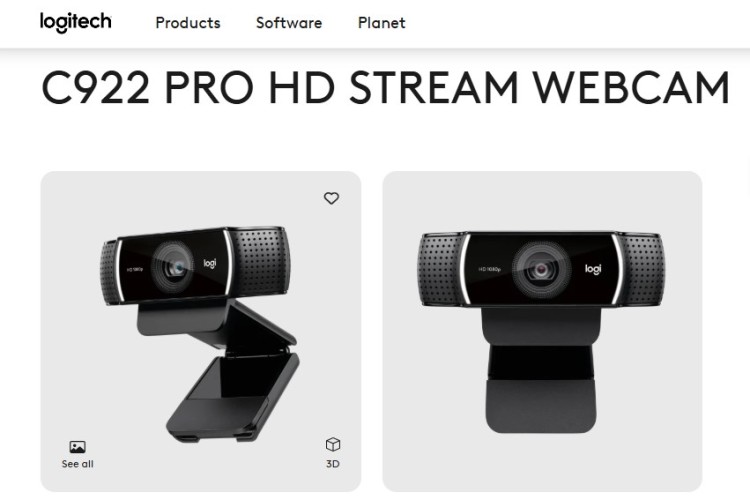
Your camera choice affects the overall polish of your video episodes. Here’s a comparison of the different types of cameras:
- Webcams: Affordable and simple to use, but they only have limited video quality. A favorite for solo podcasters is the Logitech C922 Pro Webcam, which records in HD 1080p at 30fps and can be plugged in via USB.
- DSLR or mirrorless cameras: Offer sharp and professional video recording, but cost more. Some top examples are the Sony α6400, Canon EOS R6 Mark II, and Panasonic Lumix GH7.
- Camcorders: It’s the middle ground between webcams and DSLRs, and is designed for long, continuous recording. Panasonic HC-V770 is a good point-and-shoot solution with a good optical zoom.
- Action cameras: Give you decent video for dynamic setups, but with less control. The GoPro Hero 13 Black is a popular choice.
Add these additional gears to support your camera:
- Lighting: Use a ring light or softbox to evenly light your face.
- Tripod or mount: Keeps your camera stable.
- Capture card: You need this if you’re connecting a DSLR or camcorder to your computer.
How to Set up My Podcast Equipment
Once you’ve got your gear, the next step is putting it all together. The goal is to create a space that supports great sound and a smooth recording and editing process.
Let’s get into how you can set up your podcast studio in a way that makes sense to you.
Podcast setup equipment list
Let’s start with your podcast room setup. Here’s a list of best practices so you keep your equipment in order:
- Have a dedicated recording space: Find a quiet room with minimal echo to reduce background noise. Carpeted floors, curtains, or bookshelves help absorb sound.
- Arrange your accessories well: Place your mic on a mic stand or boom arm near your mouth. But if you’re on video, make sure not to block your face.
- Keep connections tidy: Keep cables tidy and out of sight with velcro straps or cable clips. Check that your audio interface or mixer is properly connected to your computer.
- Test equipment out: Make sure everything flows well to avoid interruptions during recording.
Podcast microphone setup
To set up a podcast microphone, follow these steps:
- Secure your mic: Attach your mic stand or boom arm so it doesn’t shake or affect your recording.
- Fix the position of your mic: Position the mic about 6-12 inches from your mouth at a slight angle to avoid breath hitting it directly.
- Use accessories to improve quality: Add a pop filter in front of the mic.
- Manage your levels: Adjust gain or audio input levels on your interface or software to prevent clipping.
- Do a test recording: Listen for any background noise or plosives so you can adjust early.
Podcast hardware setup
Managing headphones and other hardware is important to keep things in order. Here’s how to set them up:
Headphones:
- Connect headphones securely: Plug podcast headphones into your audio interface, mixer, or computer headphone jack.
- Check that they fit well: Adjust ear cups for comfort and a snug fit. Cushioned headphones are also more comfortable for longer sessions.
- Set volume levels: Adjust loudness in your computer or mixer for clear monitoring without hurting your ears.
- Power up: Consider a headphone amplifier if multiple hosts need separate audio feeds.
Audio interface and mixer:
- Position your interface or mixer: Keep your interface or mixer close and accessible for fast adjustments.
- Connect microphones using XLR cables: Make sure everything is firmly plugged in, male end to the interface and female to the mic.
- Plug headphones in: Tightly connect them to the headphone output on the interface or mixer and adjust volume for clear monitoring.
- Connect the interface to your computer: Use a USB plug or Thunderbolt and install any necessary drivers for your OS.
- Connect your interface to your unit: Select your audio interface as the input or output device in your computer sound settings and in your recording software.
- Record a sample: Test input levels before recording to avoid clipping or low volume.
Cables and power:
- Keep your space tidy: Use cable ties, clips, or sleeves to reduce trip hazards and accidental unplugging during recording.
- Power your gear: Use a reliable surge protector to shield sensitive equipment from electrical spikes.
- Minimize interference: Keep unnecessary electronics switched off or put them away.
Video podcast equipment setup
Video adds another layer to engage your audience, so if you plan to upgrade, think about your video podcast setup, especially your camera.
- Place the camera at a good angle: Mount your webcam or mirrorless camera on a tripod at eye level.
- Frame yourself well: Position the podcasting camera about three to five feet away to capture your upper body and face clearly. Adjust zoom and focus if needed.
- Make sure your lighting is even: Use good lighting to avoid shadows and brighten your features.
- Use lights to improve quality: Position soft, diffused lighting to illuminate your face evenly without harsh shadows.
- Stick to one light color: Avoid mixing daylight and artificial light, which can cause flickering or inconsistencies.
- Check camera connections: Make sure their USB or video capture cables can reach the computer without tension.
- Get ready to record: Connect the camera to your computer or recording device via USB or capture card.
How to Set Up Podcast Equipment for Beginners
For new podcasters, simplicity is very important. A clean and minimal setup makes podcasting fun and stress-free. You can always upgrade and get more technical later.
Here’s a simple introduction that lets you begin recording your first episodes with confidence.
Basic podcast equipment setup
This basic podcast setup is ideal for recording your first podcast episode successfully, even without complicated gear.
- Connect your USB microphone (like the Blue Yeti or Samson Q2U) to your computer.
- Attach a pop filter and mount it on a mic stand.
- Plug in your headphones to monitor the sound.
- Open your recording software (e.g., GarageBand, Audacity, or Descript).
- Set the input device to your USB mic in the software settings.
- Adjust your mic gain and monitor your voice levels.
- Record a test clip to check sound quality.
- Hit record and speak slowly and clearly.
- Save your recording and use editing software to clean up background noise.
Explore this guide to get more podcast setup ideas.
How to Set Up Professional Podcast Equipment Bundle
When you’re ready to take your podcast to the next level, it’s time to invest in a professional-grade setup.
Here are some additional advanced equipment you can explore:
- Soundproof panels: Eliminate echo and background noise.
- External recorders: Use for backup recording (e.g., Zoom PodTrak P8, RODECaster Pro II).
- Lighting kit and backdrops: Creates a consistent look for video podcasts.
- Cloud storage or backup drives: Protect your podcast files safely.
With this setup, your production quality matches professional studios. This is ideal if you plan to monetize your podcast, partner with brands, or invite high-profile guests.
How to set up podcast equipment bundle
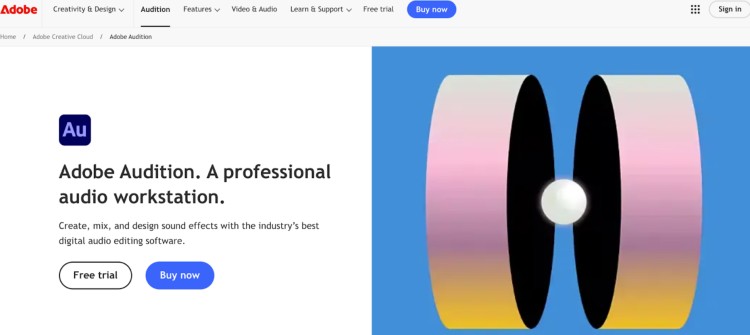
Professional podcast equipment bundles make it easy for you to set up a broadcast-quality studio without buying things one by one.
Once you’ve completed your bundle, here’s how to get your system going:
- Microphones: Plug via USB directly to your computer, or via XLR into the interface or mixer. For XLR, set the gain knob on the interface or mixer so peaks reach around -6dB. Engage phantom power (+48V) but only for condenser mics.
- Mic stand or boom mics: Attach your mic and position it a few inches from your mouth, slightly off-center, and with a pop filter to reduce plosives. Lock joints for stability.
- Headphones: Connect them to your mixer or audio interface, using headphone amplifiers if needed. Adjust the volume just loud enough for clear detail but not too loud that it brings discomfort. Check for any latency during real-time monitoring.
- Audio interface or mixer: Position your mixer and interface close to your computer. For solo hosts, interface input gain at a moderate level and use ‘Air/Enhance’ features for vocal presence if available. But for multiple hosts, set mixer gain per channel, pan each mic for left or right, and adjust headphone mixes for each person.
- Digital audio workstation: Use DAW software like Adobe Audition or Reaper for recording and editing. Make sure you select the audio interface or mixer as the input or output device in your software settings, if using any.
- Podcast studio: Set up a dedicated recording space with sound treatment to reduce echo and background noise.
- Camera: Set the resolution to 1080p or 4K and adjust focus and brightness in the camera software. For connectivity, prepare capture cards and cables like HDMI or USB.
How to Choose the Best Podcast Equipment Setup
Every podcaster has different needs. The best podcast equipment depends on your goals, content type, and equipment for your budget. Here’s how to pick what’s right for you:
- Define your format: Solo shows can use a single USB microphone, while multi-host shows typically need mixers and XLR mics.
- Set your budget: Beginners should focus on good sound before spending on upgrades.
- Test before buying: Check how a mic suits your voice. Some enhance bass, while others capture crisp highs.
- Prioritize audio: Video quality is optional when starting out, but clean sound makes a big impression.
- Plan for upgrades: As you grow, you can expand your recording studio with additional podcast equipment and lighting gear.
- Consider portability: If you record on the go, pick lightweight gear with built-in options.
- Look for compatibility: Make sure your recording software recognizes your interface or mic driver.
Set Your Podcast Up for Success
Getting your podcast equipment setup right boosts the quality of your show and confidence as a podcaster.
With the right podcast gear, you can record a podcast that sounds professional, even from your living room.
Small but meaningful decisions like this are what impact the success of your podcast. Keep them coming by deciding to join the Talks Community today.
Want to create valuable content? Talks matches you with industry experts and leaders who bring a new perspective to your show.
Collaborations are made easy with AI-tech to auto-match and auto-reply on your behalf.
Start with a Talks Creators Profile and Get Matched Quickly.
